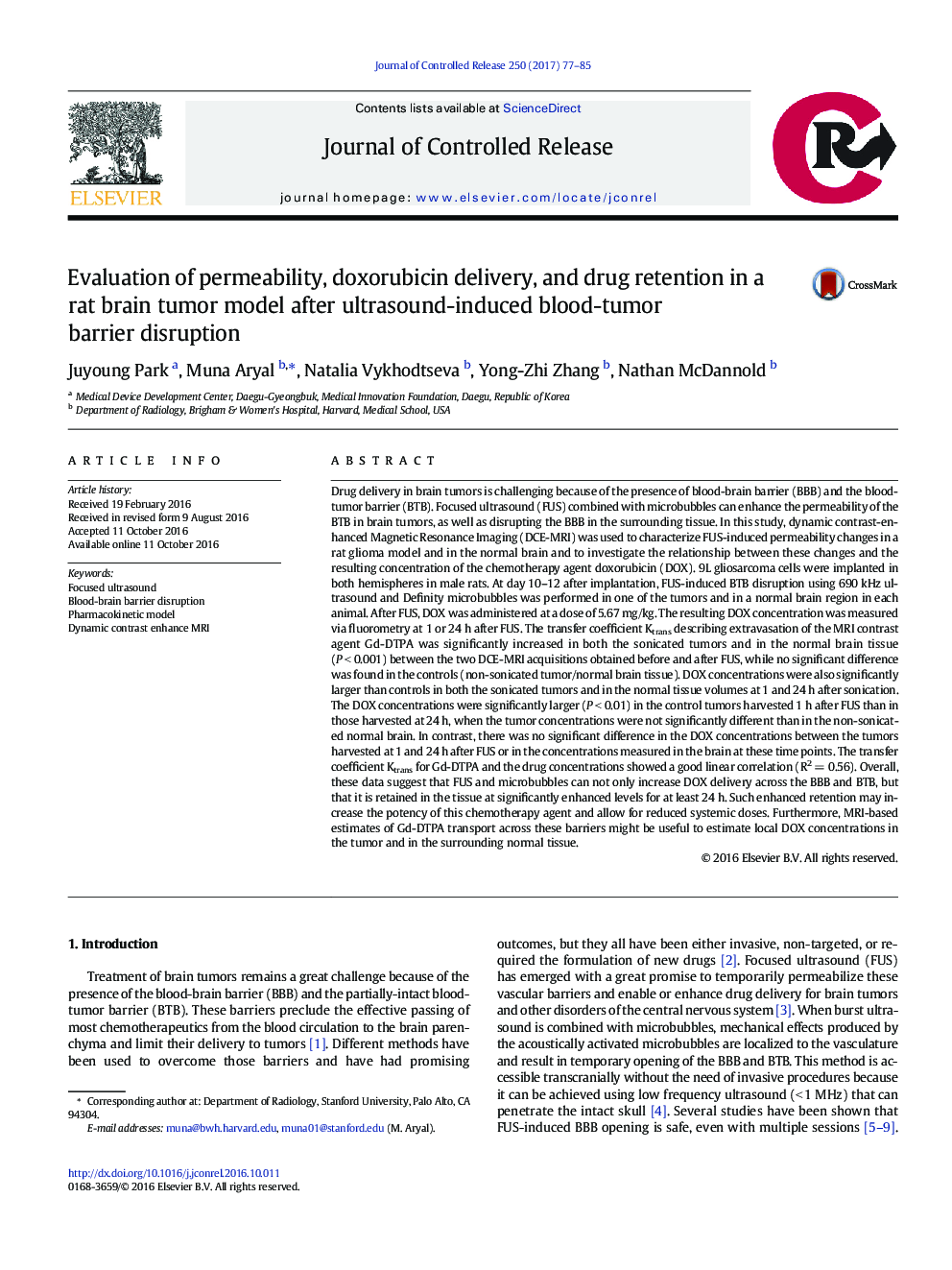| کد مقاله | کد نشریه | سال انتشار | مقاله انگلیسی | نسخه تمام متن |
|---|---|---|---|---|
| 5433744 | 1509000 | 2017 | 9 صفحه PDF | دانلود رایگان |
Drug delivery in brain tumors is challenging because of the presence of blood-brain barrier (BBB) and the blood-tumor barrier (BTB). Focused ultrasound (FUS) combined with microbubbles can enhance the permeability of the BTB in brain tumors, as well as disrupting the BBB in the surrounding tissue. In this study, dynamic contrast-enhanced Magnetic Resonance Imaging (DCE-MRI) was used to characterize FUS-induced permeability changes in a rat glioma model and in the normal brain and to investigate the relationship between these changes and the resulting concentration of the chemotherapy agent doxorubicin (DOX). 9L gliosarcoma cells were implanted in both hemispheres in male rats. At day 10-12 after implantation, FUS-induced BTB disruption using 690Â kHz ultrasound and Definity microbubbles was performed in one of the tumors and in a normal brain region in each animal. After FUS, DOX was administered at a dose of 5.67Â mg/kg. The resulting DOX concentration was measured via fluorometry at 1 or 24Â h after FUS. The transfer coefficient Ktrans describing extravasation of the MRI contrast agent Gd-DTPA was significantly increased in both the sonicated tumors and in the normal brain tissue (PÂ <Â 0.001) between the two DCE-MRI acquisitions obtained before and after FUS, while no significant difference was found in the controls (non-sonicated tumor/normal brain tissue). DOX concentrations were also significantly larger than controls in both the sonicated tumors and in the normal tissue volumes at 1 and 24Â h after sonication. The DOX concentrations were significantly larger (PÂ <Â 0.01) in the control tumors harvested 1Â h after FUS than in those harvested at 24Â h, when the tumor concentrations were not significantly different than in the non-sonicated normal brain. In contrast, there was no significant difference in the DOX concentrations between the tumors harvested at 1 and 24Â h after FUS or in the concentrations measured in the brain at these time points. The transfer coefficient Ktrans for Gd-DTPA and the drug concentrations showed a good linear correlation (R2Â =Â 0.56). Overall, these data suggest that FUS and microbubbles can not only increase DOX delivery across the BBB and BTB, but that it is retained in the tissue at significantly enhanced levels for at least 24Â h. Such enhanced retention may increase the potency of this chemotherapy agent and allow for reduced systemic doses. Furthermore, MRI-based estimates of Gd-DTPA transport across these barriers might be useful to estimate local DOX concentrations in the tumor and in the surrounding normal tissue.
83
Journal: Journal of Controlled Release - Volume 250, 28 March 2017, Pages 77-85
